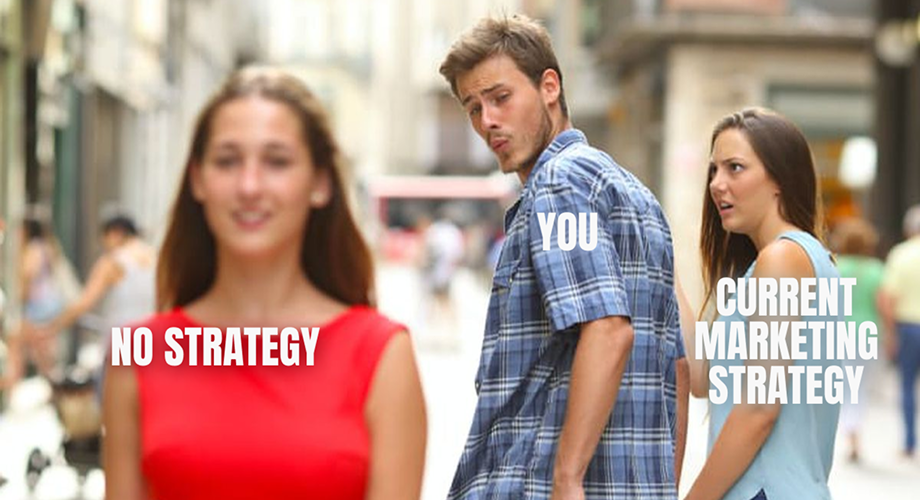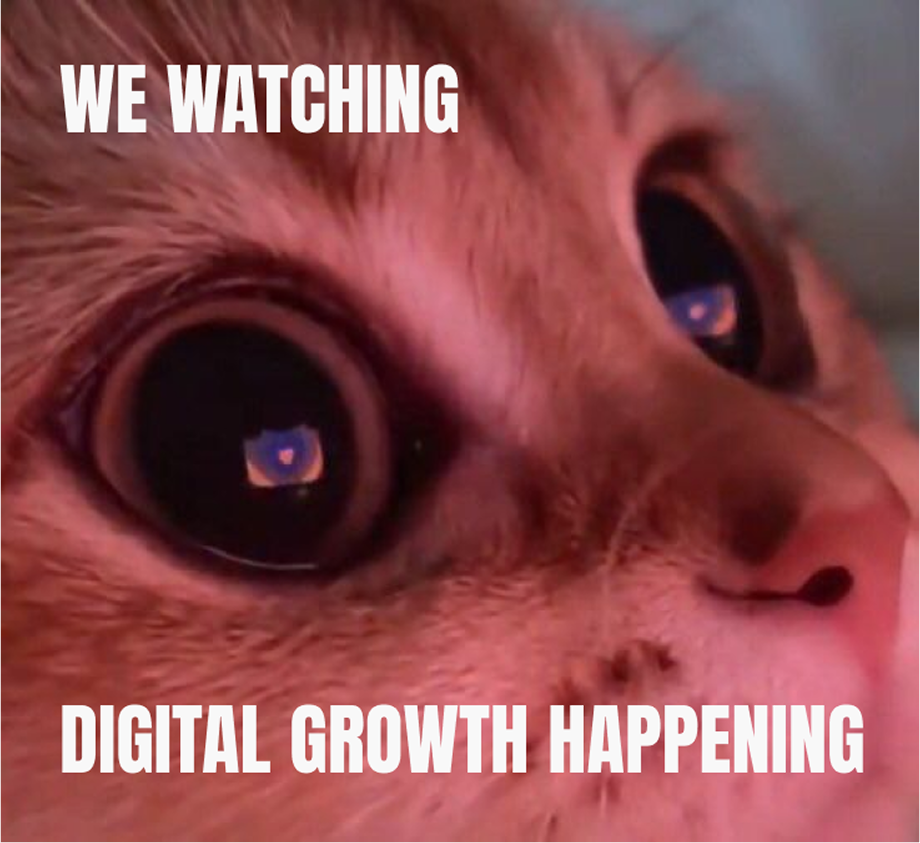
Digital marketing without a product strategy is like throwing spaghetti at the wall - it won’t stick!
Evidence Contradicting the Product-First Mindset
Let’s face it: many business people dream of hiring a digital agency that will turn their business into a success story overnight. More traffic? Done. Higher conversion rates? Easy. A surge in sales? Practically guaranteed. All while the owner sits back and watches the magic unfold.
But here’s the reality: no agency, no matter how skilled, can succeed without a strong foundation. A great product, a clear audience, a vision, and a brand strategy must come first. Marketing isn’t a magic wand; it’s a collaboration, and the best results come when business owners and agencies work together toward a shared goal.
Let’s check the numbers: why so many businesses struggled in 2024

The hard truth? Many businesses don’t make it past their early stages. Study by the Commerce Institute shows that 20% of small businesses fail within their first year, and nearly 50% shut down by year five. For startups, the numbers are even grimmer. According to CB Insights, 35% of startups fail because there’s no market need for their product.
Another common pitfall is launching without a clear concept & brand strategy. Many founders rush into performance marketing, eager to see results, but campaigns often fail to deliver without understanding their audience or fine-tuning their product.
These numbers aren’t just statistics—they’re a wake-up call. Marketing alone can’t fix a weak product or unclear value proposition. Jumping straight into paid ads or traffic-driving campaigns without a strategy is like building a house on quicksand.
Collaboration is key: a shared responsibility

Checklist: product strategy planning & market research to make it right
1. Define Your Product’s Unique Value Proposition (UVP):
- Clearly articulate what makes your product unique and why customers should choose it over competitors.
- Focus on solving a specific problem or meeting a distinct need.
2. Understand Your Market:
- Conduct Competitive Analysis: Identify direct and indirect competitors, their strengths, weaknesses, and market positioning.
- Analyze Industry Trends: Research current trends, emerging technologies, and shifts in consumer behavior in your industry.
3. Identify Your Target Audience:
- Create Buyer Personas: Develop detailed profiles of your ideal customers, including demographics, interests, challenges, and buying habits.
- Segment Your Audience: For more targeted marketing, group your audience by relevant factors like geography, behavior, or psychographics.
4. Validate Market Demand:
- Run Surveys and Focus Groups: Ask potential customers about their needs, preferences, and willingness to pay.
- Leverage Existing Data: Use tools like Google Trends, Statista, and market reports to assess demand in your niche.
5. Test Your Product Concept:
- Develop a Minimum Viable Product (MVP) or prototype.
- Gather feedback from early adopters and refine your product based on their input.
6. Define Clear Goals and Metrics:
- Set SMART (Specific, Measurable, Achievable, Relevant, Time-bound) goals for your product launch or growth.
- Choose KPIs that align with your business objectives, such as customer acquisition cost (CAC), lifetime value (LTV), or conversion rates.
7. Develop a Marketing Brand Strategy:
- Positioning: Craft a compelling narrative about your product’s benefits and market placement.
- Channels: Determine which marketing channels (social media, email, content marketing, etc.) are most effective for reaching your target audience.
8. Monitor and Adjust:
- Use analytics tools (e.g., Google Analytics, social media insights) to track customer behavior and campaign performance.
- Continuously adapt based on data-driven insights.
9. Invest in Customer Relationships:
- Build a feedback loop to understand customer needs and pain points continuously.
- Offer exceptional customer support to build trust and loyalty.
10. Educate Your Team or Agency Partners:
- Share your research findings and strategy with everyone involved in marketing and sales.
- Ensure alignment on the product’s goals, audience, and value proposition.
Creating a solid product brand strategy and understanding your audience isn’t a solo mission - it’s a team effort. Your marketing, sales, product development, and even external agencies play crucial roles in this process. Each group brings unique insights and expertise to the table:
- Marketing teams focus on understanding market trends and audience behavior and crafting resonating campaigns.
- Product Teams ensure the product aligns with customer needs and addresses key pain points.
- Sales Teams provide invaluable feedback from direct customer interactions, highlighting real-world challenges and objections.
- Agencies contribute specialized skills in performance marketing, creative design, and analytics to amplify their efforts.
As a business owner, your role is to foster this synergy—ensuring that everyone involved understands your goals, audience, and product value. No single team or agency can achieve this alone; the best results come from working together, leveraging strengths, and staying focused on the bigger picture.
Brand positioning, visual identity, consistency, and all that “creative hustle.”
Businesses with consistent branding see up to 23% more revenue growth, according to Lucidpress. Creative stages are the backbone of effective marketing, providing the foundation for a brand’s identity, voice, and consistency. They encompass everything from brand positioning and visual identity to content creation and management, aiming to distinguish businesses in competitive markets.
For instance:
- Brand Positioning ensures a business’s unique philosophy and values resonate with the audience, driving branded searches and organic traffic.
- Visual Identity creates an attractive, cohesive look and feel, directly influencing customer perception and social media engagement.
- Content Creation delivers consistent, engaging materials that boost impressions, website visitors, and CTRs, ultimately driving growth.
The absence of a strong creative program can lead to inconsistent branding, lower customer engagement, and missed opportunities to stand out. According to Lucidpress cited by Forbes, maintaining consistent branding across all platforms can increase revenue by up to 23%. Furthermore, studies by Content Marketing Institute stated that 74% of the most successful B2B marketers say the value their content provides is the top factor in their success.
Build first, then market: why strategy must precede execution
Once you’ve laid the groundwork—clarifying your brand positioning, understanding your audience, refining your product strategy, and establishing a consistent identity—you should dive into execution marketing tactics. Jumping straight into campaigns like CPC/CPA ads, SEO, or influencer collaborations without a solid foundation often leads to wasted resources and disappointing results.
Here’s why:
- CPA/CPC Campaigns: These are powerful tools for driving traffic, but your ad spend may not translate into meaningful conversions without a clear understanding of your audience and their pain points. A strong brand message and optimized landing pages are critical for success.
- SEO: Content optimization can only yield results if your brand is already positioned to address a clear audience need. SEO efforts can feel like shouting into the void without relevant keywords tied to a strong product offering.
- Content Marketing: Producing content without an established brand tone, voice, and strategy often results in disjointed efforts that fail to engage or convert your audiece.
- Social Media Engagement: Social channels amplify your brand message, but posts and ads can feel irrelevant or inconsistent if you don't clarify your audience and goals.
- Influencer Marketing: Collaborating with influencers is impactful when the partnership aligns with your brand values and audience. Otherwise, it risks diluting your message or attracting the wrong followers.
Completing the strategic activities mentioned earlier—like audience research, product refinement, and creative development—sets the stage for these performance marketing tactics to thrive. This approach ensures that every dollar spent on campaigns is used efficiently and that every effort contributes to building lasting customer relationships.
As MarketingProfs highlights, businesses that combine strategic planning with execution tactics achieve 198% higher conversion rates than those that skip the foundational steps. It’s not about doing more; it’s about doing the right things in the correct order to maximize success.
Key takeaways
Marketing isn’t about diving straight into campaigns and hoping for the best—it’s about setting the stage first. You need to define your product’s value, know who your audience is, and build a clear brand strategy. Skipping these steps is like trying to decorate a house before you’ve even poured the foundation.
Creative services are a big deal here. They make your marketing consistent, impactful, and aligned with your goals. But here’s the thing: marketing is a team sport.










